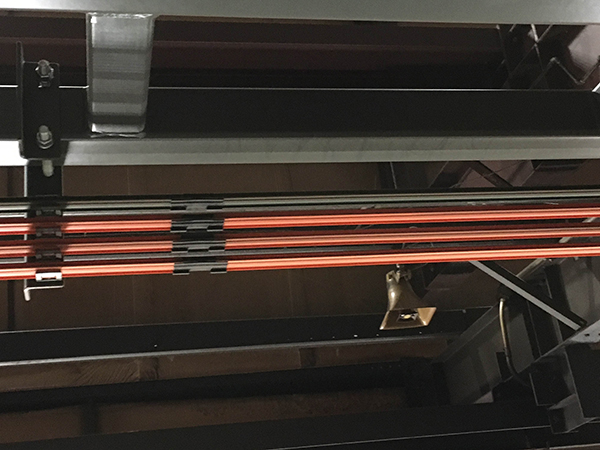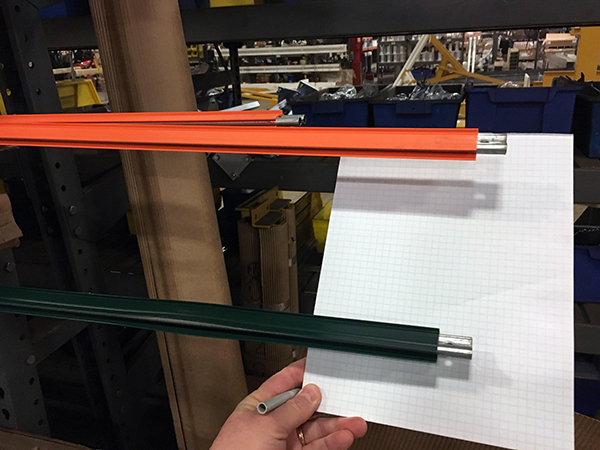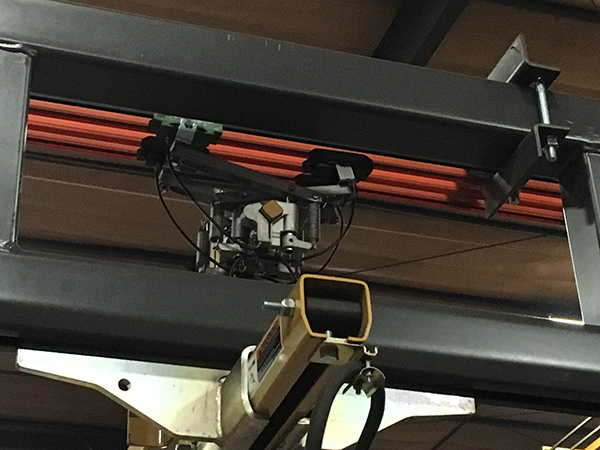
Keeping it Grounded: Is Your Crane Safe?
Jan 4, 2017
Did you know that you’re required to have a fourth ground bar on your overhead crane system?
It’s been nearly 12 years since the National Electrical Code (NEC) changed its requirements for overhead cranes. A 2005 revision of the NEC mandates that all overhead cranes must have a grounded power bar or festooning. The Bureau of Labor Statistics (BLS) reported that a crane operator could potentially be electrocuted if a crane is not grounded, which is a leading cause of workplace death.
Considering that the most common violation in the electrical and wiring methods category is grounding, it’s time to make sure your crane is up to standard. There is a lot of confusion around this OSHA regulation. Many facility managers believe they don’t need a ground bar if their steel bridge rail isn’t painted. Leaving the bridge rail unpainted can create a ground from the steel hoist wheels to the steel bridge rail, and that current can carry all the way to the steel bridge wheels and runway. Theoretically, this can ground the crane, but too many factors can prohibit proper grounding, which can lead to electrocution. Bad bearings, corrosion, and dirty rails can all interfere with grounding by contact between the metal hoist trolley wheels and the crane.
Previously, the NEC considered contact between metal wheels and the steel beam sufficient for grounding. The 2005 revision makes this approach no longer acceptable.
NEC Code Article 610.61 states:
The trolley frame and bridge frame shall not be considered as electrically grounded through the bridge and trolley wheels and its respective tracks. A separate bonding conductor shall be provided.
Some people believe they are protected by the so-called “grandfather clause,” OSHA (1910.179(b)(2), which states that all new overhead cranes constructed and installed on or after August 31, 1971 must meet the design specifications of the American National Safety Code for Overhead and Gantry Cranes (ANSI B30.2.0-1967). Although this provision makes an exception for cranes constructed before the specified date, it only applies to how the overhead crane is designed. It does not apply to how the crane is installed and connected in a facility. Rather, electrical equipment is covered by OSHA 1910.179(g), which requires electrical components to comply with 1910 subpart S – electrical.
So what does that mean for you? Well, the NEC code strictly regulates that a grounding bar on the power bar or grounding wire on the festoon system is required for all overhead cranes. Because the NEC regulates this rule, OSHA hasn’t put it into their own regulations. In other words, a three bar or wire system is out of code. There are ways to retrofit your crane if you don’t want to purchase an entirely new system. For instance, a 4th conductor (the grounding conductor) can be added to the busbar system:

The upgrading of power bar systems to comply with these requirements usually does not require the complete replacement of a power bar system. A fourth rail of grounded power bar and new collector shoes are usually all that’s needed. The grounded power bar must be green, as noted in the December 5th, 2001 OSHA Letter of Interpretation.
If your crane is getting old and you haven’t retrofitted yet, it’s time to take that step. As always, consult with your local, state, or federal OSHA office for clarification of any OSHA law.
SOURCES:
- Most Frequently Cited Standards. www.osha.gov. United States Department of Labor. September 02, 2012 www.osha.gov/dcsp/compliance_assistanc/frequent_standards.htm
- NEC Code Article 610.61. National Electric Code.
- National Fire Protection Association. NEC Handbook 2005 Ch 6 Special Equipment. May 05, 2005.
- Fatal Occupational Injuries by Selected Characteristics, 2003-2010. Bureau of Labor Statistics. http://bls.gov
Categories
Share this post
Contact us
Looking for the perfect fall protection equipment? Let us help!


